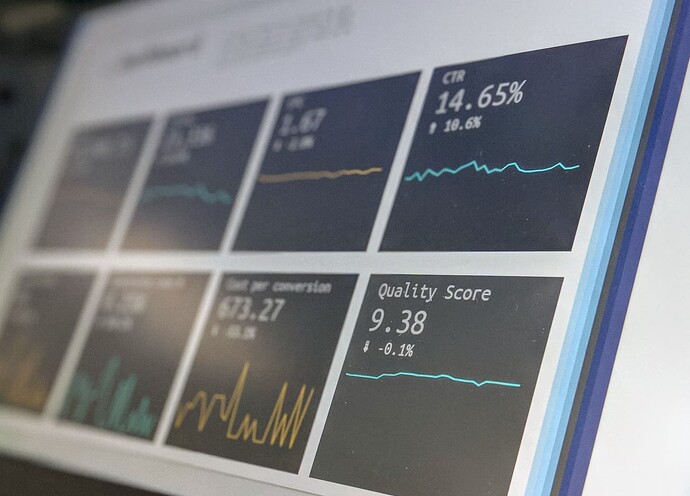There’s a moment in every growing team when someone suggests “we need better metrics.” Usually this happens right after a confusing quarter where everyone worked hard but nobody’s sure if we actually made progress.
The conversation quickly turns to KPIs versus OKRs, as if choosing the right acronym will solve the underlying problem. But here’s what I’ve noticed: companies adopt these frameworks without first answering the fundamental question - what are we actually trying to achieve?
It’s like choosing between a compass and a map before you know where you want to go. The tool doesn’t matter if you haven’t defined your destination.
As I mentioned in my recent post about scalable processes, having clear organizational philosophy and goals is foundational. Your measurement framework should flow from that clarity, not try to create it.
The fundamental difference
KPIs (Key Performance Indicators) measure ongoing performance against established standards. They answer “how are we doing?” on things that matter consistently over time.
OKRs (Objectives and Key Results) set ambitious targets for specific timeframes. They answer “what do we want to achieve?” and “how will we know we got there?”
The confusion comes from thinking you have to choose one or the other. Most successful teams use both, but for different purposes.
When KPIs work well
KPIs excel at measuring steady-state operations. Customer satisfaction scores, monthly recurring revenue, system uptime, community engagement rates - these metrics help you maintain and optimize what’s already working.
For early-stage teams, good KPIs might include:
- User retention rates
- Community growth and engagement
- Product development velocity
- Customer support response times
The key is choosing metrics that actually drive behavior you want. If your KPI is “number of features shipped,” don’t be surprised when your team prioritizes quantity over quality.
When OKRs shine
OKRs work best for breakthrough goals and organizational alignment. They force you to define what success looks like for ambitious, time-bound objectives.
A well-structured OKR might be:
Objective: Establish market leadership in our category
Key Results:
- Achieve 40% market share by Q4
- Land 3 of the top 5 industry partnerships
- Reach 95% brand recognition in target demographic
The beauty of OKRs is they connect daily work to bigger vision. People understand how their individual contributions move the needle on company objectives.
The pitfalls I see repeatedly
Micromanagement through metrics: Teams get obsessed with measuring everything. They create 47 KPIs and wonder why nobody knows what actually matters. Remember: what gets measured gets managed, but over-measurement kills judgment and creativity.
Meaningless goals: Setting targets without understanding why those numbers matter. “Increase social media followers by 50%” sounds good until you realize those followers don’t convert to customers or community members.
Gaming the system: Once you measure something, people optimize for that metric specifically. If your KPI is “lines of code written,” expect bloated, inefficient code. If your OKR is “user acquisition,” expect growth hacking that burns through budgets without sustainable value.
Misaligned timeframes: Using OKRs for operational metrics or KPIs for breakthrough goals. Quarterly OKRs for things like “maintain system uptime” don’t make sense. Annual KPIs for “launch new product category” miss the point.
The philosophy problem
Here’s what I’ve learned: if your leadership team doesn’t agree on fundamental philosophy and goals, no measurement framework will save you.
KPIs become political weapons when different leaders have different definitions of success. OKRs turn into negotiation battles when the executive team hasn’t aligned on strategic priorities.
This is why that foundation work matters so much. You need shared understanding of what success looks like before you can measure progress toward it.
What actually works
The best approach I’ve seen combines both frameworks thoughtfully:
Use KPIs for operational excellence: Measure the things that need consistent attention. Customer satisfaction, financial health, system performance, team productivity.
Use OKRs for strategic breakthroughs: Set ambitious goals that require focused effort and coordination. Market expansion, product launches, major partnerships, organizational transformation.
Keep it simple: Most teams need 3-5 KPIs and 2-3 OKRs maximum. If people can’t remember your key metrics, you have too many.
Connect the dots: Show how daily KPI performance supports quarterly OKR achievement. Make the relationship between operational excellence and strategic progress explicit.
The human element
Remember that metrics are tools for humans, not the other way around. The best measurement systems enhance judgment and decision-making rather than replace them.
If your team spends more time debating metrics than acting on insights, you’ve probably over-engineered your measurement system. If people are hitting all their numbers but you’re not achieving your mission, you’re measuring the wrong things.
Questions for your team
- What are you actually trying to achieve as an organization? Can everyone on your leadership team articulate the same answer?
- Which aspects of your business need consistent monitoring versus breakthrough improvement? Are you using the right measurement approach for each?
- How do your current metrics influence daily behavior? Are people optimizing for the outcomes you actually want?
The goal isn’t perfect measurement - it’s useful measurement that drives the right actions and outcomes. Choose your metrics as carefully as you choose your strategy, because in many ways, they become your strategy.
